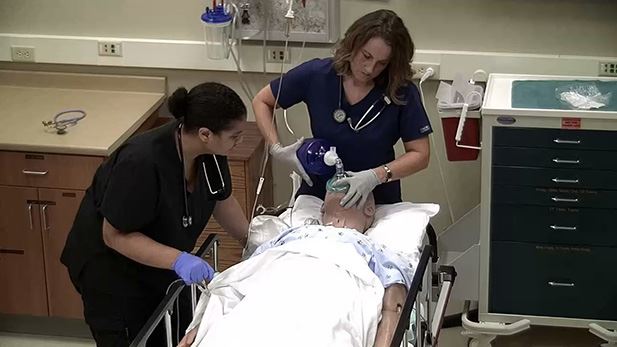

Library > Respiratory Care > RC > Perform Oxygen Administration Protocols
Try Simtics for free
Start my free trialPerform Oxygen Administration Protocols

Check our pricing plans here
Unlimited streaming.
Supplemental oxygen administration is a therapeutic medical treatment that is used to maintain a patient's normal SpO2 level. Ongoing assessment and evaluation must be carried out to ensure the treatment is safe and effective.This module will provide knowledge of how to perform oxygen assessments to ensure a therapeutic level of oxygen is being delivered in a safe manner. Including both Learn and Test modes, the online simulator will test your ability to recognize oxygen administration equipment. Practice the steps of the procedure as often as you want until you are confident.
You’ll learn
- pre-procedure considerations
- indications for oxygen therapy
- how to calculate the oxygen levels in tissue
- how to recognize when hypoxia might be present and the calculations used to determine hypoxia
- the proper steps for applying oxygen administration devices
- much more (see Content Details for more specific information)
- Describe pre-procedure considerations for various types of oxygen administration equipment.
- Describe and demonstrate the proper assembly of various types of oxygen administration equipment.
- Identify the appropriate oxygen administration equipment based on patient conditions and evaluations.
- Identify patient 'sats' (oxygen saturation levels) that require adjusted oxygen treatment methods.
- Define and use related medical terminology.
- Understand Occupational Safety and Health Administration (OSHA) guidelines.
- Understand correct post-procedure considerations.
- Explain the Patient Privacy Rule (HIPAA), Patient Safety Act, and Patients' Bill of Rights.
The SIMTICS modules are all easy to use and web-based. This means they are available at any time as long as the learner has an internet connection. No special hardware or other equipment is required, other than a computer mouse for use in the simulations. Each of the SIMTICS modules covers one specific procedure or topic in detail. Each module contains:
- an online simulation (available in Learn and Test modes)
- descriptive text, which explains exactly how to perform that particular procedure including key terms and hyperlinks to references
- 2D images and a 3D model of applied anatomy for that particular topic
- a step by step video demonstration by an expert
- a quiz
- a personal logbook that keeps track of all the modules the learner has studied and how long
For more details on features and how your students can benefit from our unique system, click here.





